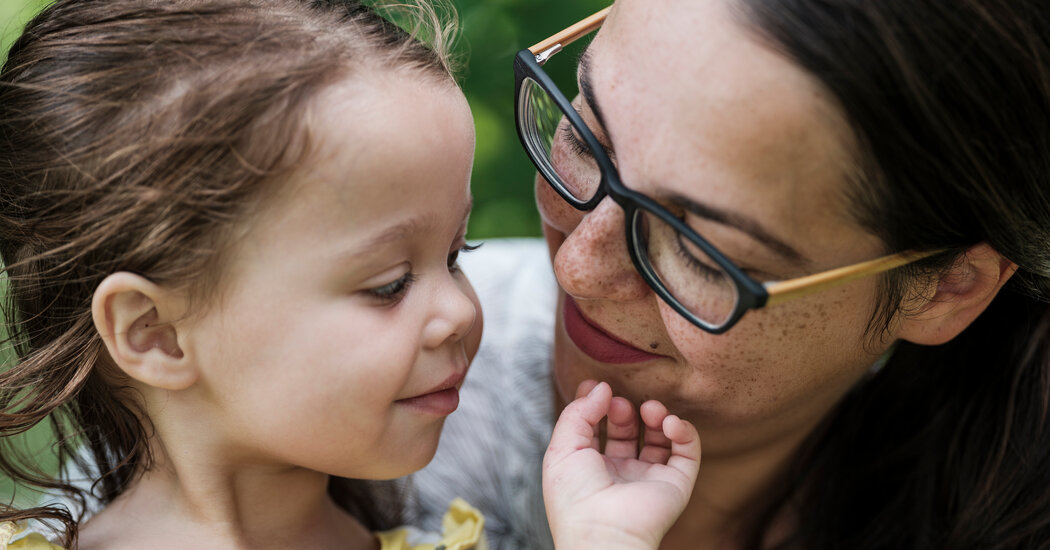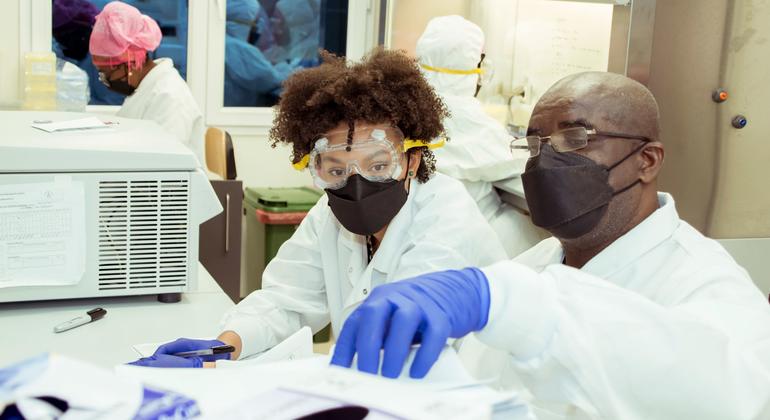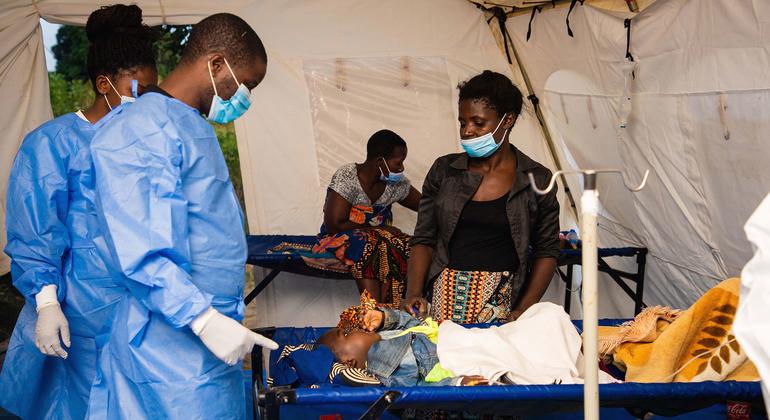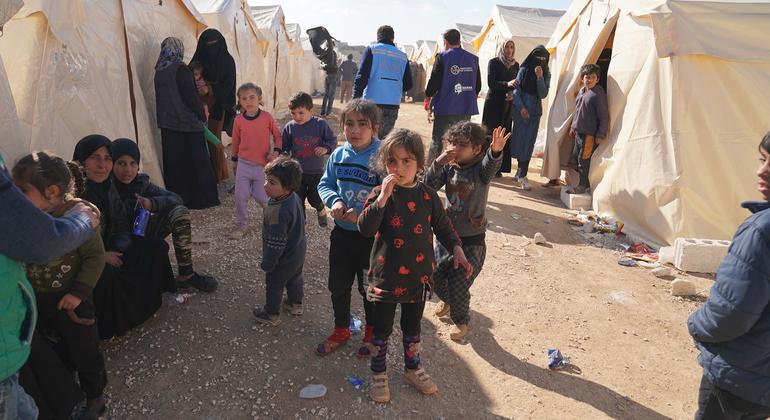A Better Way to Measure Immunity in Children

[ad_1]
For Jacqueline Almeida, next week cannot come soon enough.
She has watched friends roll their eyes when she asked to meet them outdoors. She has tried unsuccessfully to convince her sister to vaccinate her son. She was told by strangers on Twitter that putting her daughter in a mask was tantamount to child abuse.
And yet the vaccines for the youngest Americans faced delay after delay. “It was very disappointing, month after month, seeing everything get pushed,” said Ms. Almeida, 33, who lives in Franklin, Tenn.
But now there’s some good news: Vaccines should be available in days for her 6-month-old son and 2-year-old daughter. Scientific advisers to the Food and Drug Administration on Wednesday recommended the Pfizer-BioNTech vaccine for children aged 6 months through 4 and the Moderna vaccine for children aged 6 months through 5.
The agency itself authorized the vaccines on Friday, and the Centers for Disease Control and Prevention is likely to follow suit on Saturday. If all goes according to plan, about 18 million children in this age group will become eligible for immunization against the coronavirus for the first time, the final piece in the nation’s vaccine strategy.
After a series of delays by regulators, however, only about one in five parents plan to have their young children immunized right away, according to one recent survey.
In a letter to F.D.A. officials in April, nearly 70 scientists offered their own assessment: The delay was preventable. Their argument is a technical one, but with broad implications.
The agency and the manufacturers chose to evaluate the vaccines by tracking blood levels of antibodies, the scientists said. But had regulators also considered other parts of the immune system, it might have been clear early on that the vaccines could prevent serious illness, if not infection, in young children.
In particular, the scientists argued, the vaccine manufacturers should have been measuring so-called T cells, which can kill infected cells and rid the body of the virus. That “would have allowed us to possibly make a different decision about allowing a vaccine to move forward earlier,” said John Wherry, director of the Institute for Immunology at the University of Pennsylvania and one of the letter’s signatories.
“If we don’t measure the T cells, we’re missing a big part of what’s happening,” he added. “My gosh, we’re 18 months into this, we can devote a little bit of energy to stuff like that at this point.”
The F.D.A. declined to comment on the letter, but Dr. Wherry said agency officials called the scientists about a month ago to discuss their ideas.
Vaccine manufacturers ran large trials to measure the efficacy of the vaccines at preventing symptomatic infection in adults. But in the children’s trials, the investigators looked at blood levels of antibodies following vaccination, comparing them with the levels seen in young adults.
The F.D.A. used this method, called immunobridging, to authorize the Pfizer-BioNTech vaccine for children aged 5 to 11 and for adolescents aged 12 to 15. But in December, the companies reported that two doses of their vaccine did not produce high antibody levels in children aged 2 through 4.
The companies decided to assess whether a third dose improved the vaccine’s performance. Then, over the winter, some young children in the clinical trial became infected with the Omicron variant.
Based on preliminary data from those infections, the F.D.A. said it would consider authorizing two doses of the vaccine while the companies continued to test the third — a decision that provoked mixed reactions from parents and experts.
But the number of infections among children grew, and the accruing data did not support the F.D.A.’s decision, prompting the agency to cancel its planned review. The back-and-forth left parents confused and their children vulnerable, as Omicron variants rampaged through the nation.
The C.D.C. reported in April that about 75 percent of children may have been infected with the coronavirus by March, many of them during the Omicron surge. Record numbers of children were hospitalized, although still in much lower numbers than adults.
More information about T-cell immunity generated by the vaccines might have delivered the shots to desperate parents sooner and prevented at least some of those hospitalizations, experts said in interviews.
Antibodies are essential for neutralizing the virus on entry and preventing infection, and they can easily be measured in just a drop or two of blood. But while there are dozens of rapid tests for antibody levels, assessing T cells requires at least a few milliliters of blood and at least a day to test just a few samples.
Including T cells in a vaccine analysis would “really up the complexity and cost of the study,” said Dr. Camille Kotton, an infectious disease physician at Massachusetts General Hospital and a scientific adviser to the C.D.C.
“It’s never as easy as antibodies, but it definitely would be helpful,” she said.
And not everyone is convinced that T cells are an important metric for immunity. Low levels of antibodies may be enough on their own to prevent severe disease, said Dr. Miles Davenport, an immunologist at the University of New South Wales in Sydney.
“There is no study demonstrating that the level of vaccine-induced T cells is predictive of either the risk of infection or the risk of severe disease,” Dr. Davenport said.
Still, epidemiological data indicate that even as antibody levels declined and infections rose sharply, hospitalizations and deaths in vaccinated people remained relatively low. That suggests that something other than antibody levels protected people from severe illness, Dr. Wherry said.
“Mortality is only increasing in the very old population or those who are immunocompromised, where we lacked or had poor T cell responses,” he added. “There’s a lot of good circumstantial data out there, but we’re really missing a smoking gun.”
A new initiative at the University of Pennsylvania may deliver some answers. Called the Immune Health Project, the study will simultaneously assess antibody and T cell responses in immunocompromised patients after vaccination.
Unanswered questions about immunity in children may explain why roughly 40 percent of parents of young children are on the fence about immunizations: Fewer than 30 percent of children aged 5 to 11 have received two doses, and the demand for the youngest children may be even lower.
Monica Lo, 35, who is an assistant principal at a school in Seattle, is among the hesitant. “Covid vaccination is happening so quick and so fast that we wanted to give it a little bit more time,” she said.
Ms. Lo and her husband are both fully vaccinated, but their 7-year-old son, Gian, had only one shot of vaccine in January before a planned trip to Hawaii. They decided to delay his second dose because of data suggesting that doing so might produce better immunity, Ms. Lo said.
The couple also has a 2-year-old daughter, and Ms. Lo is pregnant with their third child, due in July. But they don’t plan to vaccinate their daughter just yet, Ms. Lo said: “We will not be first in line.”
[ad_2]




